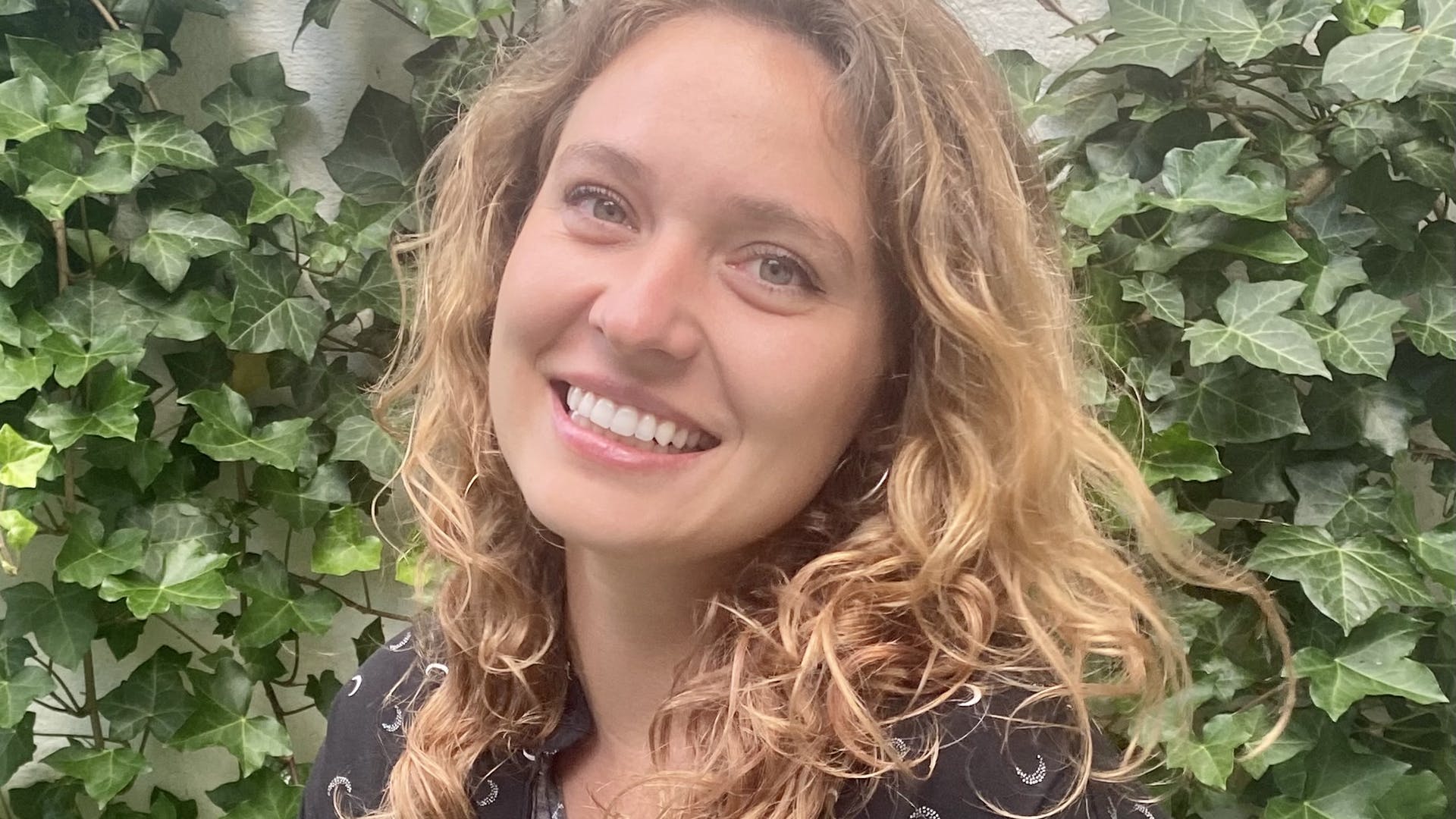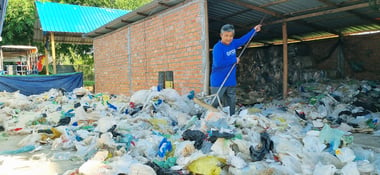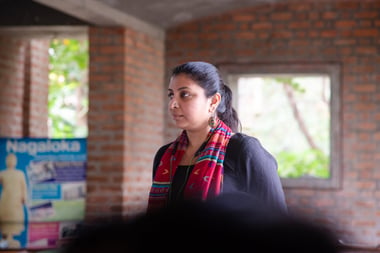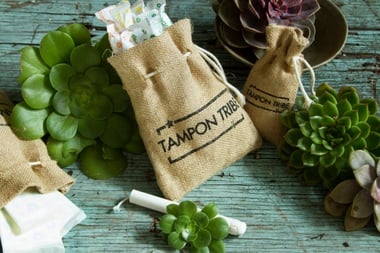
Beth Howell
Beth has been writing about the environment and climate change for over four years now – with her work being featured in publications such as The BBC, Forbes, The Express, Greenpeace, and in multiple academic journals.
In a bid to learn more about marine plastic, our CEO Joel Tasche has carried out an exciting interview with Hanna Dijkstra — a Ph.D. researcher at the Institute for Environmental Studies at Vrije University.
Hanna’s work focuses on the problem of marine plastic. She’s been looking at solutions from an innovation and an entrepreneurship perspective, seeing what kind of new business models and technologies are being introduced, the challenges they're facing, and how these can be up-scaled to really reduce the problem.
Here's what she had to say.
Q. Could you start by describing the key drivers for plastic pollution that you see in your research?
A. I think we’ve become aware of the problem too late — even myself!
Before I became a researcher, I didn’t notice plastic as a problem. As a society, we’ve become incredibly dependent on this whole throwaway, disposable culture where everything is accessible and individually wrapped. To us, it’s convenient.
Now there’s this shift in awareness — everyone's sort of looking around at the supermarket and other places thinking, “Oh, there's plastic everywhere. What can we do about it now?” And it's not so easy to then say, “Let's go back. Let's stop this.”
The COVID pandemic made us all wake up to a lot of things, especially our plastic consumption. Ordering things online has also become the norm — you order items and they come wrapped in these plastic packages, and you feel guilty, but there's seemingly no good alternative.
The main problem, especially in Western, industrialized societies, is that we have just become so dependent on plastic for everything.
"As a society, we’ve become incredibly dependent on this whole throwaway, disposable culture where everything is accessible and individually wrapped."
Q. Can you tell us a bit about your research on the topic?
A. Sure! My research is heavily tied to marine plastic, which is plastic that is located in rivers, streams, and oceans. It's ugly and it's scary.
We can all agree it’s bad and that we don’t like it — but what can we do about it?
It's actually really difficult and expensive to manage plastic that has already left traditional waste management systems. So now there’s this demand for products and services to then manage marine plastic and other types of mismanaged waste.
The goal is to then create a business model or a technology or a system that can efficiently — but also economically — feasibly reduce the problem of marine plastic.
There also needs to be interesting ways to finance these sorts of services because they’re expensive. So that's another thing I'm looking at.
I'm looking at this emerging industry and market for products and services to deal with marine plastic. Most of that is coming from entrepreneurs, NGOs, and startups that have noticed the opportunity, and they’re moving quickly and doing interesting things to manage marine plastic.
Q. How do you differentiate between managed and mismanaged waste?
A. I don’t really have a clear definition, but once the waste is in the environment, that’s when I consider it to be mismanaged waste. That could be in a river, on a coastline, or in a mismanaged system, which is where I think you're also active quite a bit!
Consider parts of Southeast Asia, for example — there may be no managed waste system at all. That doesn’t mean waste is not recovered or recycled, but it does mean that some low-value materials may be dumped or left in open landfills, and have a higher likelihood of ending up in the environment.
Whereas if you think about Amsterdam or Europe, for example, we have waste management systems, we have landfills, and we have end-of-life options for almost every single material that you can think of.
Whether that's recycling, having it shipped somewhere else, or incinerated, there is a sort of established pathway for most materials, and once it's left that system it's considered mismanaged. In Europe, this is most likely to happen by littering, accidents, or system failures.
Q. Another word that is very loosely defined is 'ocean-bound'. How would you define it, or where do you see issues with the term?
A. I do see a lot of issues with the term.
As part of my Ph.D., I’ve been helping Masters students who are doing their theses. They work for a short period, doing a deep dive on a particular topic. This year, I was lucky enough to recruit somebody to look into the terminology, certifications, and labeling around 'ocean-bound' and 'ocean plastic'.
It was just getting so complicated in my mind, so I decided that this could be an entire thesis project.
So, they're still busy with it, and I think the main result is that companies and organizations that use these terms like to manipulate them for their own benefit or their own context.
Interestingly enough, I think the term was introduced by scientists who were trying to build a model to understand where the potential boundary is for waste that could, at one point, realistically end up in the ocean. And so they came up with, I believe it's a 50-kilometer boundary — and now that definition has been used by many people around the world.
And sometimes that can mean literally in a place where there is no waste management system, or a situation where a plastic water bottle is tossed out of a car window. The reality of it entering the ocean is quite high.
But there are also situations where there's a plastic bottle recycling facility that happens to be located 30 kilometers from the coastline but is very effectively managed.
And a company may then say, you know, all plastic that's treated in that facility is also considered ocean-bound, even though the reality of any of those bottles entering the ocean is very, very low. That’s where there is confusion.
There is also no easy way to then determine where it is a valid threat, and where there's a high likelihood of this plastic entering the ocean. And then can we call it ocean-bound, yes or no?
So, watch this space — I'm working on it (laughs).
"Companies and organizations that use these terms like to manipulate them for their own benefit or their own context."
Q. As a consumer, what are the things you're looking for in a brand, and what it determines as an impactful solution?
A. As an informed consumer, it’s nice to go into a grocery store and see that things are changing — to see that companies are taking note and there are a lot of production lines producing minimal plastic products or even plastic-free products.
But there also needs to be a systemic overview of the company processes.
The first step for companies looking to reduce their plastic needs to be looking at their practices and saying, “What can we reduce, what can we feasibly minimize or design away so that the plastic never has to be produced?”
But ultimately, plastic does need to be produced...you know, if I think about parts of my cell phone or my headphones — it's great that they're made of plastic because they're light, they last for a long time.
What we need is a distinction between useful and useless plastic.
Wrapping avocados in plastic, which is immediately discarded, is useless plastic. We should work to reduce the number of avocados wrapped in plastic — but for headphones, durable goods, backpacks, and reusable water bottles, I think plastic is a great material.
Therefore, the company making these products has to produce plastic, and I think that's where plastic neutrality and plastic crediting can come in.
And what I see as a real benefit of plastic crediting as a tool is that it is a really large opportunity for financing. Like I said earlier, ocean plastic and plastic that has left the system is expensive because you have to go and collect it. It's mixed, it's dirty, it's degraded, you don't know what it is.
Summary
We'd like to thank Hannah for her insightful take on plastic waste, and what we can do to overcome this global issue.
If you'd like to learn more about plastic pollution, check out Hannah's official website. Alternatively, dive into some of our articles on the topic:




.webp?width=380&name=Sarah-Jeanne-Royer%20(1).webp)

-2.png?width=380&name=Untitled%20design%20(2)-2.png)
.jpg?width=380&name=drone-2021-12-06-10h31m38s177%20(1).jpg)


-1.webp?width=380&name=microplastics%20(1)-1.webp)

